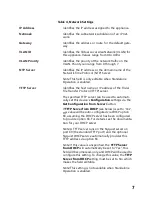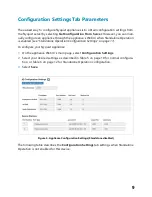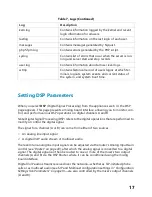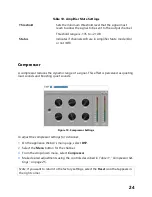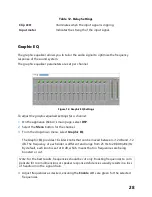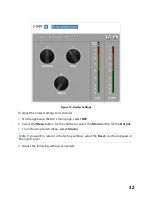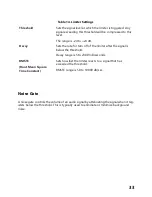
18
Tip:
The output levels of digital audio streams received over the network are controlled by the same slid
-
ers that control analog line input signals. You can use the DSP Router to adjust an analog signal level rel
-
ative to a digital signal level on the same channel.
The digital signal, regardless of the source, is then conditioned, filtered, and enhanced via
the DSP processors, and its level adjusted via the mixing board’s slider controls. The dig
-
ital outputs of all channels are converted to analog signals and sent to the channel’s elec
-
trical output connectors. If this device is being used as an Audio Distribution source, the
signals can be distributed as digital audio over the network using a Nyquist server’s
Audio Distribution feature.
Note:
Audio Distribution functionality is not supported in Standalone Operation mode.
From the
DSP
page, you can view and control the signal levels for each channel. Selecting
the DSP Features button for a channel displays a list of DSP features which can be applied
to that channel (though some DSP features are channel-independent, such as Router and
Status), such as compressor, noise gate, filters, equalizers, and limiters, as well as features
for monitoring the signal and the amplifier status. You can even load groups of pre
-
defined DSP settings, known as
DSP presets
, and assign them to the channel connected to
that speaker.
Figure 8. DSP Page




